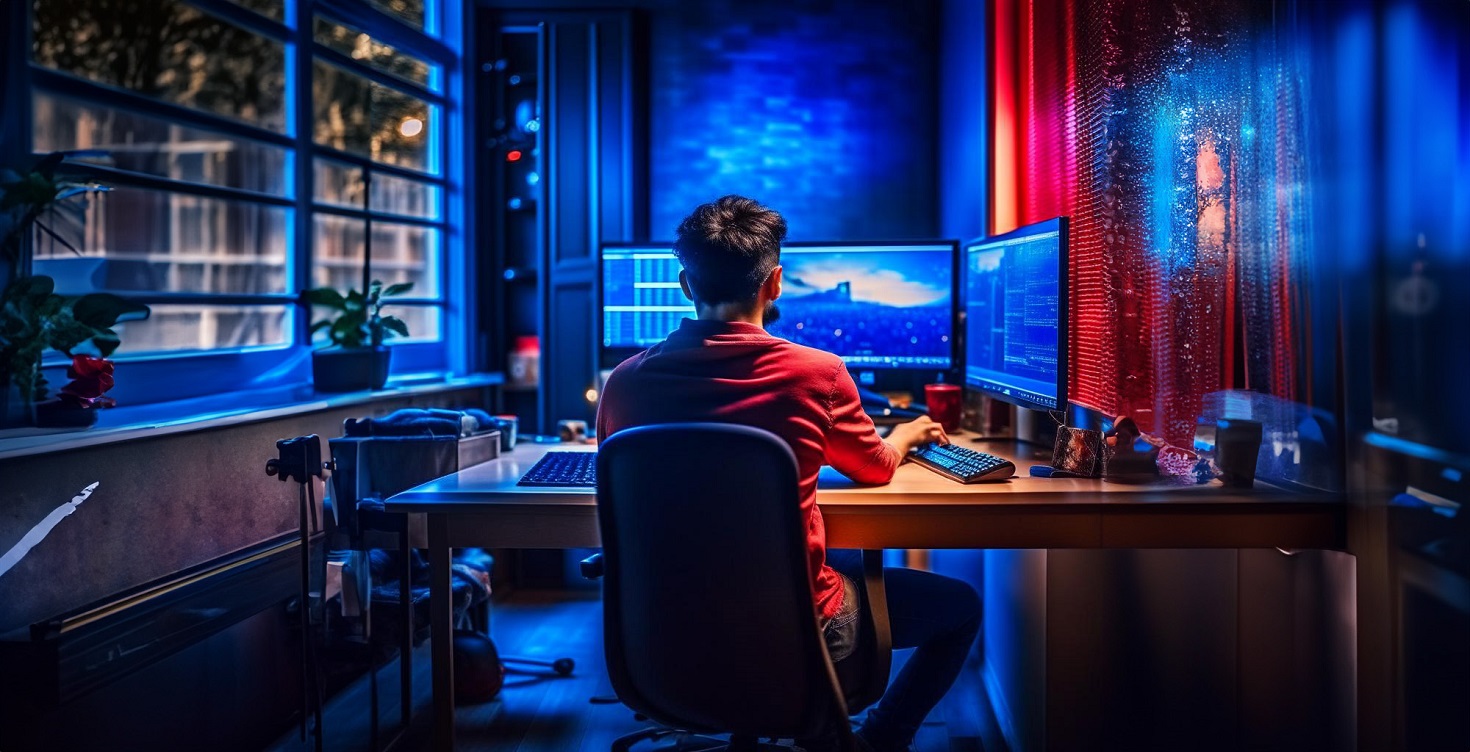There are some great AI logo creator apps, but a lot of them cost money to use. If you use the right prompts you can use free AI image generators to create great logos. Let’s help you make your first awesome logo!
Understanding AI in logo design
When you’re designing a logo you want it to reflect not only the type of product or service you provide but also a message. You want the logo to capture the emotion and ambitions of your company.
That can be hard to conceptualize or brainstorm, never mind drawing it. Using an AI image generator can shorten this process and make it a lot easier by quickly generating multiple options for you to choose from.
There are a lot of great AI image generators like DALL-E, Midjourney, and a host of others.
For simplicity, we will refer to Midjourney in our prompt guide below because it delivers the best results. Once your free credits expire you’ll need to buy some but these prompts will work well on your favorite free image generator too.
To illustrate this, we used DALL-E, Night Cafe, Clipdrop, and a few other tools to create our example logos.
Tips for writing great AI prompts for logo design
It helps to know some basics of what makes a good logo before you start. Once you have a sense of the type of logo you want then the following tips will help you craft the perfect prompt.
- Tell Midjourney that you’re creating a logo
- Use names of well-known artists and graphic designers to give the AI logo generator an idea of the style you’re after.
- Include genres or artistic movements to influence the design
- Start simple and tweak later – Midjourney will often deliver complicated images unless you tell it specifically to keep it simple.
- Midjourney isn’t great at handling text but can produce single-letter logos.
- Use the –no command or negative prompts to exclude things you don’t want in your logo
If you want to add text as an integral part of your logo it’s best to generate your logo without the text and then add it later. Once you’ve got your logo you can use Canva or Photoshop to add the text to it.
Prompt Library For Logo Design
We will separate the prompt library to align it with 5 different types of logos. A lot of the prompts will overlap across the logo types but there are also some nuances to be aware of.
The types of logos we will cover are:
- Logo symbols (brand marks or pictorial marks)
- Abstract logo marks
- Mascots
- Emblems
- Letterforms / Lettermarks (monogram logos)
We won’t cover prompts for wordmarks, or dynamic logos as tools like Midjourney struggle with text and consistency.
Here are some of the best logo prompts to get you started.
Logo symbols (brand marks or pictorial marks)
These logos are images or icons that are normally based on real-world objects. Good examples of logo symbols would be Apple’s apple image or Twitter’s previous logo of a blue bird.
“flat vector logo of [object], minimal graphic, by [designer] --no realistic photo details”

Using words like “flat” and “vector” tells Midjourney that you want a very linear image with no 3D-type textures which is what most logos call for.
In the [object] section use an item that directly relates to your product or service. Things like a coffee cup, dog, car, etc…
Adding a famous designer’s name will influence the style or you can leave that out and give the AI free reign.
The section after the –no command tells Midjourney to make our image like a drawing rather than a photo:
“vector graphic logo of [object], simple minimal --no realistic photo detail shading”
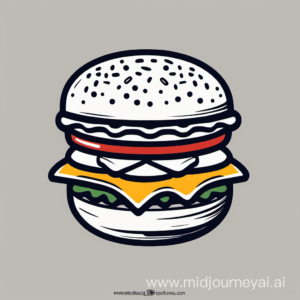
Using the word “simple” will result in a simpler design with fewer colors. Adding “shading” to our list of exclusions will ensure that the colors are constant rather than shaded with a gradient:
“flat monochrome logo of [object], simple, on [color] background --no photo realism”

Using “monochrome” is a nice way to get Midjourney to choose its own color combinations while retaining the monochrome simplicity.
You can specify the background color but often you would probably end up making the background transparent when using the logo. For example:
flat vector logo of yacht, minimal graphic, by Pablo Picasso, no realistic photo details
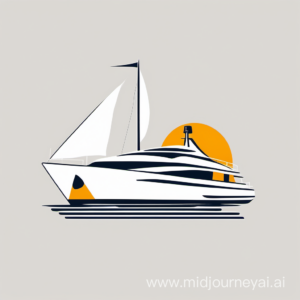
Abstract logo marks
Abstract logos aren’t representative of real-world objects but are shapes and colors that represent some aspects related to a company’s values or aspirations. Some good examples of abstract logos are the Nike swish or the Olympic rings.
"unique and simple logo for a [project creator] brand, abstract logo"
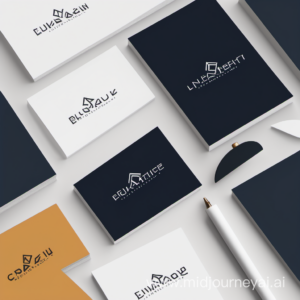
Including the word “abstract” tells Midjourney that we aren’t looking for an image that is representative of a real-world object.
Telling it a little about your product or service will influence how Midjourney directs its creativity:
“minimal abstract logo, [shape], grayscale”

Because we’re asking for an abstract design we don’t have to use our “–no photo realistic” instruction.
Including a shape will guide Midjourney into producing an abstract design while aligning with the kind of shape you’re after.
Using a color descriptor like “grayscale” is a nice example of controlling the color output in your logo:
“Simple abstract logo, geometric, repeating, minimal”
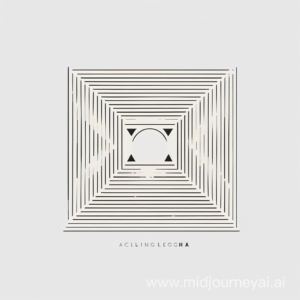
Using the word “geometric” will make the logo less free form and “repeating” can make your abstract logo more symmetrical.
"simple abstract logo, geometric, repeating, minimal, in the style of pop art"

Mascots
Mascot logos are images of characters that normally have a face like cartoon characters. These can be human, animal, or fictitious. Some good examples of mascot logos are Colonel Sanders, the Michelin Man, and the Pringles Man:
“simple mascot logo of [character], in [style] style, --no shading”
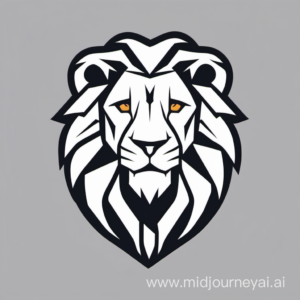
Telling Midjourney that we want a mascot lets it know we want a character created and the animal or description we enter in the [character] section will narrow what it creates.
In the [style] section we can use terms like “Japanese”, “retro”, or “vintage” which are good ways to get the feel you want in your mascot logo:
“simple mascot logo of a cat holding a [item] and wearing a [item], --no shading detail”
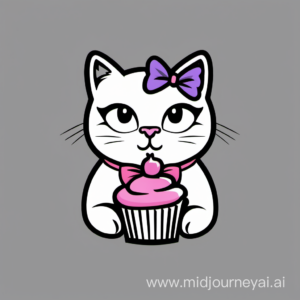
Instead of letting Midjourney do as it pleases you can tell it what you want your mascot to be doing, wearing, or holding.
By adding “detail” to the list of exclusions you ensure that the logo design is very simple:
“mascot logo for [industry] company, vector, simple”
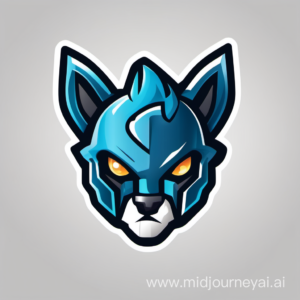
Telling Midjourney what industry the company is in will guide it in the kind of mascot logo it produces:
mascot logo for coffee company, vector, simple
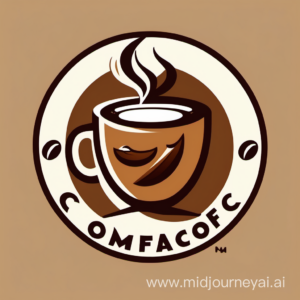
Emblems
Emblem logos are often used for clubs, universities, family crests, or brands looking for a retro or classic feel. Some good examples of emblem logos are the NFL logo, the Porsche badge, and the Starbucks logo.
These can be tricky to make with Midjourney because they often include text and AI art generators aren’t great at that.
Using the prompts below will give you a good start on your logo but you’ll need to correct the text in Photoshop or Canva.
“emblem logo for a [club type] club, simple, vector --no photorealistic details”
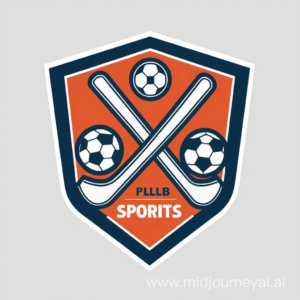
Defining the club type will influence the design Midjourney comes up with:
“emblem for a [sports] team, simple minimal --no shading detail ornamentation realistic color”
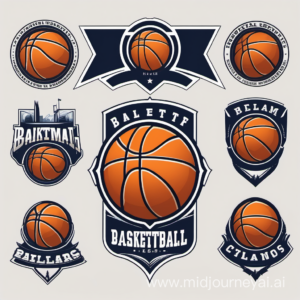
Including the sports type in the prompt will influence the design. Using the words “detail” “ornamentation” and “color” in our list of exclusions delivers a clean design in black and white.
“emblem logo for a family crest, include [item] and [item], --no shading detail realistic”

Midjourney has a good idea of what a family crest should look like but telling it what items to include will make the output closer to what you had in mind.
emblem logo for a cricket club, simple, vector, no photorealistic details

Letterforms / Lettermarks (monogram logos)
While tools like Midjourney are really bad at producing text, they can generate letterform, or lettermark, logos. These logos consist of an object in the shape of a single letter, often presented in a stylized manner.
Some good examples of letterform logos are the Facebook “F” or Mcdonald’s “M” logos.
“letter [letter] logo, lettermark, round typography, vector simple, --no shading detail realistic”
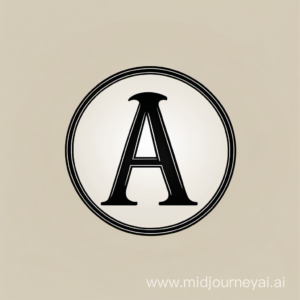
Insert whatever single letter you want your logo to resemble. This prompt uses “round” to describe the typography shape we want.
“letter X logo for social media company, lettermark, typography Slab, --no color shading”

Defining what company the logo is for will influence the design. You can define the font you want like this prompt has by including “typography” and then the style or font.
“letter [letter] logo, lettermark, in cube, simple, serif font, --no realistic details”
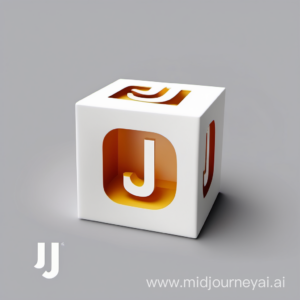
You can give design guidance by adding a shape like “cube” as we did as well as by specifying the font you want.
We specified that we want it to be “simple” but adding the term “realistic details” will ensure that Midjourney gets the point that we want a very simple design:
"Letter X logo, lettermark, in cube, simple, serif font, no realistic details"
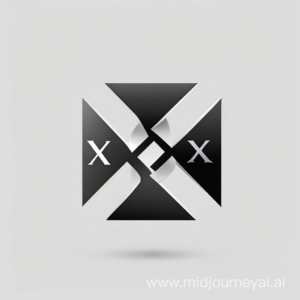
Graphic designers, artists, and genres to use for styles
If you want your logo to have a specific look and feel it often helps to include “in the style of” and then add the name of an art movement, artist, or famous graphic designer.
Some examples you could use in your logo design are:
Graphic designers:
- Saul Bass
- Milton Glaser
- Paula Scher
- Neville Brody
- David Carson
Artists:
- Claude Monet
- Pablo Picasso
- Banksy
- Jackson Pollock
- Kenton Nelson
Art movements:
- Pop Art
- Minimalism
- Conceptual Art
- Performance Art
- Street Art
Conclusion
Designing a logo for your company, app, or product can take time to get just right. Using AI to design a logo probably won’t result in the final product, but it’s a great help in speeding up the brainstorming process.
Use the logo design prompts above and tweak them a little at a time to make small changes. Using different AI image tools and different generative models will also help widen your creative pool.

